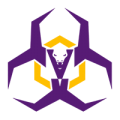The price of illness in the working environment, not only during a pandemic
The international community has proved completely unprepared to fight against the coronavirus, even though every business owner had come into contact with other, less dangerous viruses in the past. Even seasonal flu, too often underestimated or even ignored, turned out to be dangerous and exposed companies to various costs. We are confronted more and more frequently with the question whether employers know how to effectively take care of workers’ health and safety in the new reality?
Driven by curiosity, I looked through several websites, including the website presenting the reports published by the Polish Social Insurance Institution (ZUS). The image I saw does not fill me with optimism. The data provided by the Polish Social Insurance Institution (ZUS) indicate that between January and April 2019, the total of 9.2 million medical certificates of temporary inability to work were issued. Majority of such certificates, i.e. 60%, were issued for 1 to 10 sick days, and 33% were issued for 11 to 30 sick days. This means that in 93% of cases, the costs of employees’ illness were borne by the employer.
Only in the first quarter of 2019, the number of paid sick days reached 102.9 million, of which the total of 85,800,000 sick days were taken due to workers' own illness. The analysts from the Polish Social Insurance Institution (ZUS) calculated that 17% of these 85.8 million sick days were caused by respiratory diseases, which gives us the total of 14,500,000 sick days due to the common cold, seasonal flu, pneumonia and other even more dangerous diseases (please note that last year, we did not even mention coronavirus yet). Taking into account the fact that this is the statistics for the first quarter of 2019 and not specifically targeting the increase in respiratory diseases in spring and autumn, we will multiply the number of sick days by 3 to get the annual total. What is the result? 43,500,000 sick days due to illness. If we divide this figure by 252 working days per year, this gives us the total of 172,620 people who did not work for the entire year. I wonder how many companies from the list of Poland’s 100 largest companies would be able to stay dormant for an entire year?
PKN Orlen employing about 21 thousand employees, PGNiG with about 25 thousand employees, LOTOS Group with 5.1 thousand employees, PGE with about 42 thousand employees, PZU with about 42 thousand employees, KGHM with 34 thousand employees – all these entities would not see a single employee in their workplace for an entire year. The six largest organisations in Poland would cease to operate, and there would be thousands of petrol stations closed down, there would be lack of electricity supply, there would be problems with gas supply… The situation would also be critical if it affected other companies with which we are cooperating on a daily basis. Let's divide the total of 172,000 absentees from work for a year into the locations we visited every day before the coronavirus pandemic: Biedronka (the largest private employer in Poland) employs 67 thousand people, Lidl – about 18 thousand, Dino – 16.5 thousand, Carrefour – 16 thousand, Auchan – 22 thousand, Eurocash – 21 thousand, Tesco – about 15 thousand. This already gives us 175.5 thousand people. Can you imagine such a void within the Polish economy?
The coronavirus pandemic will leave a lasting imprint on the world we have known so far, causing permanent changes. Since the seasonal flu or common cold can expose organisations to such significant costs, the pandemic risk becomes not only a social factor but also a business one. Here comes the change: and here we have a sparkling bon mot for this occasion: the Chinese word for “change” is composed of two Chinese characters, one of which signifies “opportunity” and the other “threat”. It is worth keeping this in mind when preparing to build new strategies that take into account new threats.
The time of crisis that the coronavirus pandemic will trigger will be a test for both managers and employees. The supervisory boards will take a critical look at how effectively the executive boards responded to the imminent clash with reality. The executive boards, in turn, will assess the managerial staff – how efficiently they shifted from brick-and-mortar to selling online and how quickly and safely they transitioned to a virtual workforce (wherever it was possible). The managers, on the other hand, will have to make adjustments to the number of teams and will leave those who will be able to manage teams in a more difficult economic period and will be able to achieve their goals. We will have to deal with all this in a short (hopefully) period of time.
Long-term lessons learned from the COVID-19 pandemic are more important – can we afford to pay for 93% of paid sick days? The problem is certainly not a new one, but there are new ways of reducing the negative impact of sickness absence on the organisations. Environment, health and safety (EHS) experts, doctors and paramedics who fought the SARS CoV 2 pandemic in Poland, Lombardy and the USA, as well as labour market experts from Antal have jointly developed a Healthcare Audit service according to the EVIPER System based on the current recommendations of Poland’s Chief Sanitary Inspectorate and the WHO. The EVIPER System, once implemented and properly maintained:
- will help protect workers from infection in the future through appropriate preventive measures,
- will enable the identification of “clean” and at-risk zones,
- will indicate the security measures implemented within the organisation,
- will help choose personal and collective protective equipment, and most importantly –
- will help the employer formulate procedures to minimise the risk of infection and the spread of the virus in the working environment.
Such security systems in the new post-Covid-19 world, which we will get to know shortly, will not only guarantee the company’s survival and sustainable growth, but may prove to be a very important element of competitive advantage in the era of fighting for the best human resources. After all nothing is more valuable than one’s own life and health.

















